
views
- When you’re just starting to work out, opt for low-impact, slow workouts as you figure out your body’s limitations.
- Find activities you enjoy to make working out more fun, or work out with a buddy for accountability and support.
- Get into beginner-friendly activities like walking, yoga, or swimming—activities you can easily modify to suit your needs.
Best Workouts for Beginners
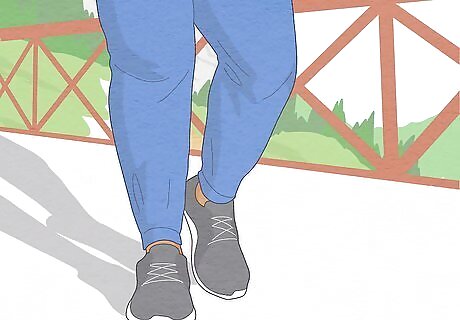
Walking Just walking for a few extra minutes each day can really make a difference. Plus, being outside in the fresh air, especially around nature, can really boost your mental health. Build a walk around your neighborhood with your morning coffee into your daily routine, or next time you hang out with a friend, invite them to hike in your local park instead of crashing in front of the television. If you’re mostly sedentary, try adding in a 10-minute walk to your day to start, and increase the amount of time every day. Add little moments of walking into your day—for instance, get off the bus a few stops earlier and walk the rest of the way home.
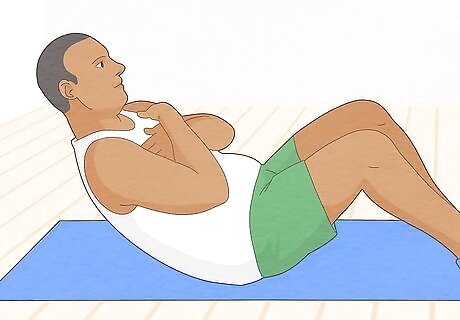
Bodyweight exercises It’s important to follow a well-rounded exercise routine that includes both cardio and strength training. But when you’re a novice lifter, getting a gym membership—let alone working out in front of people—can feel a little overwhelming (and expensive). Luckily, there are a lot of strength training exercises you can do anywhere, without any supplies except your own body. Try crunches, wall-sits, and push-ups for great strength training workouts that require no special equipment.
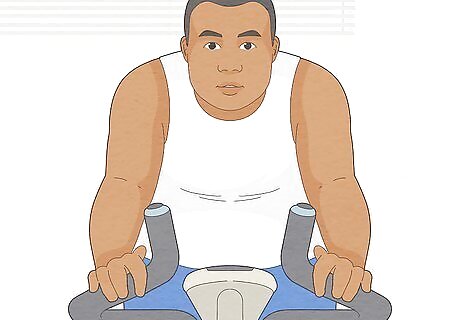
Spin class Spinning is a great form of exercise for the novice health nut because it’s super easy to modify the workout to your comfort and ability levels. Not only that, a class offers you the added social benefits of an enthusiastic teacher and fellow students. You’ll feel supported by your community of spinners and maybe even develop some new friendships. If you’re worried about exercising in front of a group of strangers, don’t worry—many spinning classes take place in dimly lit rooms, meaning if you need to slow down or stop, nobody is likely to notice.

Yoga Yoga might not be what you think of when you think of working out, but it’s a great way to stretch and increase flexibility. Like spinning, it’s also a workout that’s easily modifiable, so you can start simple, and move on to more complex positions as your body becomes stronger and more flexible. All exercise is great for your mental health, but yoga in particular is extremely beneficial for your emotional wellbeing. It’s also a great way to warm up before a more strenuous workout (or cool down after).
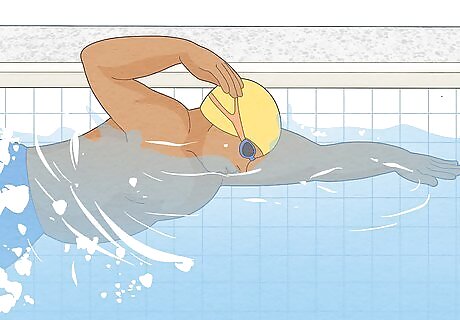
Swimming Swimming is not only fun, it’s a great form of physical activity for beginners and hardcore exercisers alike because it increases your heart rate without straining your joints. Make a visit to your community pool, gym, or body of water and splash around for a few minutes each day or a couple times a week to get in better shape and boost your mental health.
Exercising for Beginners
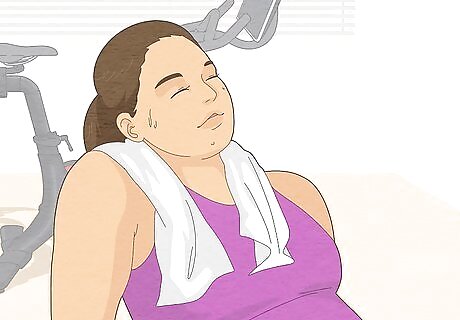
Keep your workouts low-impact and slow. When you’re just starting exercising, it’s important to go easy on your body as you figure out your limits. You might be eager to dive all in, but overextending yourself can result in injury (which can really hold you back). So avoid high-intensity workouts when you first start. Give yourself time to figure out your body’s limitations, understand where you’re at and what you can and can’t handle. Gradually push your limits as your body grows stronger and more resilient. Really listen to your body when you move: does it hurt when you move this way or that? Do you feel overheated? There’s no shame in pausing or stopping whenever you need to. If you’re reluctant to start exercising, commit to just 10 minutes of exercise every day—or even 1 minute. 1 minute is a manageable amount to commit to, and you’re likely to keep going once you begin. Even if you only exercise for a few minutes each day to start, you’ll grow more resilient and eventually be able to increase your workouts to 10 minutes, 20 minutes, a full hour. EXPERT TIP Laila Ajani Laila Ajani Fitness Trainer Laila Ajani is a Fitness Trainer and founder of Push Personal Fitness, a personal training organization based in the San Francisco Bay Area. With over 10 years as a trainer and exercise specialist, Laila has expertise in competitive athletics (gymnastics, powerlifting, and tennis), personal training, distance running, and Olympic lifting. Laila is certified by the National Strength & Conditioning Association (NSCA), USA Powerlifting (USAPL), and she is a Corrective Exercise Specialist (CES). Laila Ajani Laila Ajani Fitness Trainer It's normal to face challenges during workouts, especially if you're a beginner or have a unique body shape. Everyone has different fitness levels, so don't hesitate to adjust your workout depending on where you're at. If you're starting, it's a good idea to begin with simple exercises to learn the correct form before moving on to more challenging variations. Choosing exercises that suit your body helps you to achieve your fitness goals safely and effectively.
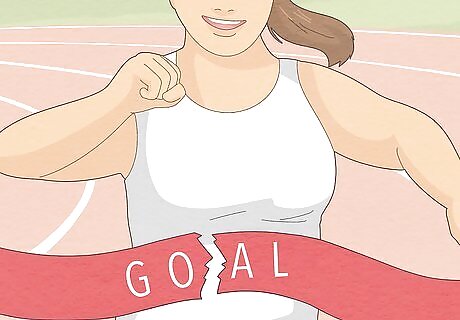
Set realistic goals to work toward. Just saying you "want to be in better shape" is a little vague. Setting specific goals can make it easier to commit to working out, whether you're aiming to run a marathon or you just want to take the stairs instead of the elevator at your apartment. When you're starting out, try setting a goal to get active 3 days a week or to jog all the way around a track (1/4 mile) within a month or two. Write down your goals to make them more official. Sharing your goals with others may also help you stick to them, so consider telling a few friends your goals for some support and accountability.
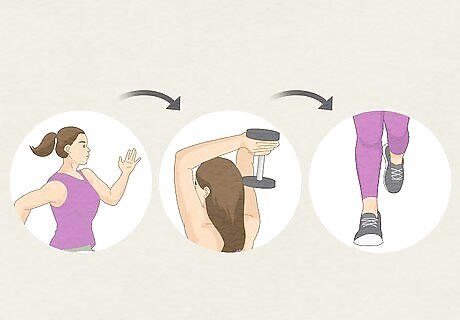
Follow a balanced weekly routine (and include a rest day). Experts recommend getting at least 150 minutes of moderate aerobic activity or 75 minutes of vigorous aerobic activity in every week, and that you do strength training for all muscle groups 2 times a week. Spread this time out over the course of the week as it fits into your schedule, but be sure you reserve a day or 2 to let your body recuperate. For instance, you might jog or swim on Monday, Wednesday, and Friday, and do strength training exercises on Tuesday and Thursday. If you have a busy schedule, dedicating regular time to working out can be hard. Try to build your exercise routine around your existing schedule: if you talk to your friend on the phone every Wednesday evening, go for a walk while you do it. If you like to watch TV after work, hop on an exercise bike while you watch.
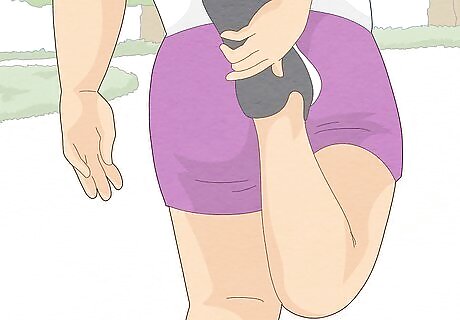
Warm up and cool down to prevent injury. Warming up before an activity or cooling down afterward generally involves doing that activity slower and at a reduced intensity. Warming up helps your body prepare for exercise, while cooling down helps you recover from your workout. Failing to warm up and cool down can increase muscle stiffness and soreness. It can be tempting to skip warming up or cooling down, but it only takes a few minutes before and after your workout to adequately warm up or cool down—and it's worth it.
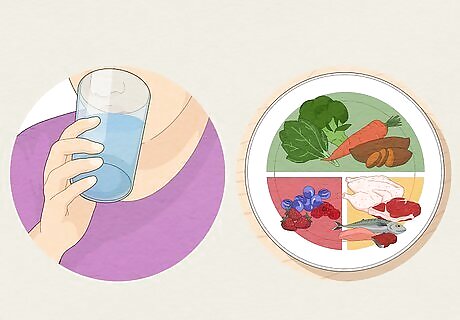
Stay hydrated and eat a balanced diet. Getting in shape isn’t only about working out—it’s also about making sure you’re getting enough water and nourishing foods. Eating the right foods can also give you more energy to exercise. Eat plenty of fruits and vegetables and lean proteins, healthy fats and whole-grain carbs, and, of course, drink lots and lots of water. Even if you’re working out to lose weight, it’s important to eat well. Skipping meals or not getting enough nutritional value can reduce your muscle mass, lower your bone density, and cause fatigue, which can not only make it harder to work out, but can lead to injury while exercising. But be sure not to eat too soon before exercising. Try to eat at least 1.5 hours prior to working out.
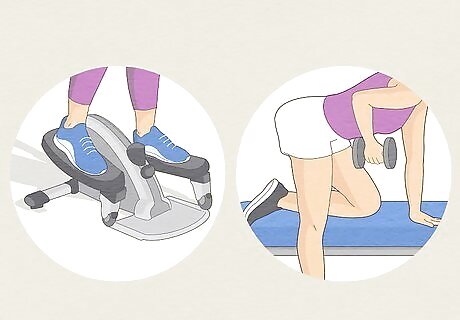
Do exercises you enjoy. Let’s be real, working out can not only be difficult and time-consuming—it can also be tear-inducingly boring. So spice things up a little. Taking it easy doesn’t mean you can’t enjoy yourself. Try out different exercises until you find one you enjoy doing, whether it’s using the elliptical or playing Quidditch. (Yes, people play Quidditch!) While it’s important to take things slow when you’re first starting out, sometimes being bored is a sign your body wants to be pushed a little more. Don’t go overboard, but consider challenging your body a bit more to make your workout more of a thrill.
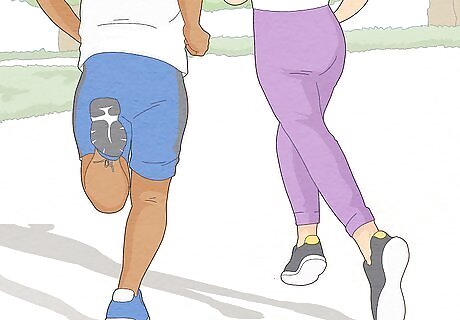
Buddy up to make working out more fun. Another way to ensure you’ll stick to your activity is to partner up with a friend. You can both offer each other support and encouragement and chatting through your workout is another way to make exercising more fun. Exercising with a friend or partner is also a great way to get some quality bonding time in. In today’s busy world, it can be hard to find the time to catch up with loved ones, but exercising is a great team-building activity.
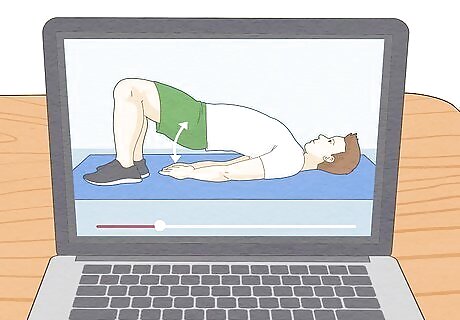
Watch exercise videos for convenience. You don’t need to pay for a pricey exercise class or gym membership to get in shape. Quality exercise videos abound on YouTube. Search around for the best video tutorials for your preferred workout, or ask friends for their recs. Watching from home gives you the ability to find a trainer that suits you and to pause or stop your workout whenever you want. If yoga's your thing, Yoga with Adriene offers yoga tutorials for all experience levels, and Move with Nicole offers great Pilates classes for beginners and aficionados alike. There are exercise videos for HIIT (high-intensity interval training), kickboxing, dancing, and more—test out different instructors and routines until you find one you vibe with. Plus, most of these activities don’t require any special equipment—just your body!
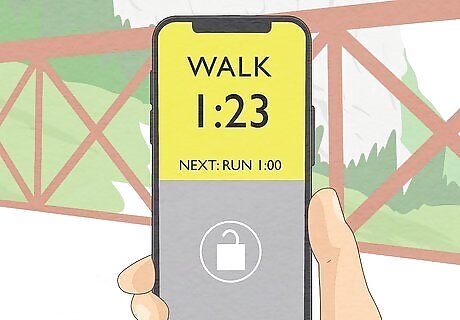
Use an exercise app to keep yourself on track. There’s a plethora of workout and health apps on the market today, and many of them are free. Want to work up to running a 5K? Try Couch Potato to 5K. Want to walk 10,000 steps a day? Try Pacer. Do a little Googling to find apps centered on the activity you want to do, or ask your health nut friends for their recommendations. Use training apps to keep track of your progress, but also consider apps that monitor your health at large, like meal tracking apps and sleep apps. Getting in shape doesn’t isn’t just about working out—it’s also about eating nourishing food, drinking enough water, and getting quality sleep.
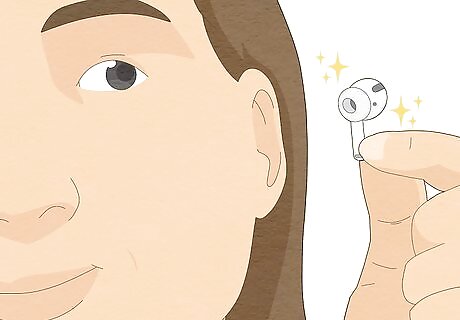
Reward yourself with a little treat afterward. You got out of bed early to jog this morning? You deserve a little treat. Giving yourself permission to do something special after your workout is a great incentive to keep up with your routine: maybe go to a movie, or work up to a bigger treat over time—for instance, once you’ve run a 10-minute mile, you’ll treat yourself to a new outfit or that new video game you’ve had your eye on. You can also make working out a treat in itself: for example, get a membership to the botanical gardens so that you can enjoy the scenery while you walk or jog. You don’t have to spend money to treat yourself, either. Tell yourself you’ll only listen to that true crime podcast series while you’re working out as an incentive to exercise: how will you know whodunnit if you don’t go for your daily bike ride?
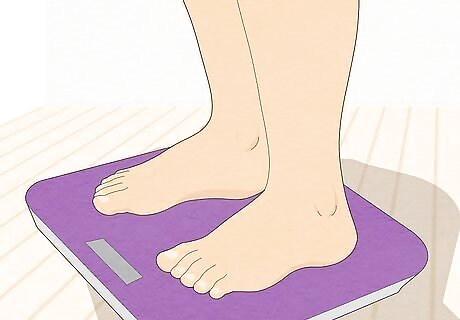
Go easy on yourself. Remember, nobody ever became great at something overnight, and exercise is no different. If you’re not used to working out, you won’t wake up and suddenly be able to run a marathon, so have some compassion for yourself and go at your own pace. And be sure to celebrate your victories, even if they seem small. A bunch of tiny victories add up to giant wins over time. Being too hard on yourself can also make it easier to quit sooner. So be gentle with yourself as you figure out your limits and goals and find a routine that works.
Benefits of Getting in Shape
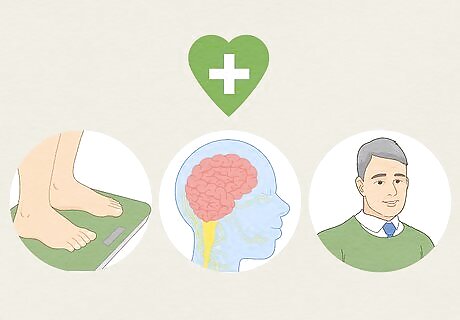
Working out improves your quality of life in a myriad of ways. The benefits of getting in shape are numerous. Just 150 minutes a week of moderate physical activity can offer better brain health, weight loss and weight management, reduced risk of certain illnesses, and an increased lifespan. Getting in shape can reduce your risk of developing type 2 diabetes, cardiovascular disease, and certain types of cancer. For those who want to maintain their weight or lose weight, exercise is a great way to do that, in addition to developing healthy eating habits. Working out has also been proven to increase cognitive functioning and reduce depression and anxiety. As you age, regular physical activity can keep your thinking, learning, and judgment skills sharp, and help you maintain good mental health.
















Comments
0 comment